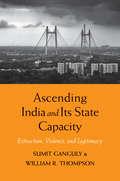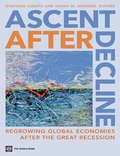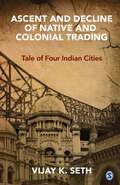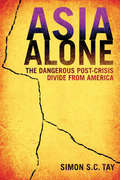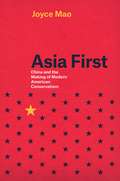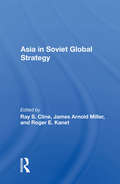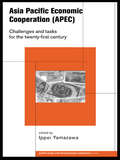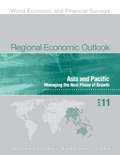- Table View
- List View
As the Future Catches You
by Juan EnriquezYou will never look at the world in the same way after reading As the Future Catches You. Juan Enriquez puts you face to face with a series of unprecedented political, ethical, economic, and financial issues, dramatically demonstrating the cascading impact of the genetic, digital, and knowledge revolutions on your life. Genetics will be the dominant language of this century. Those who can "speak it" will acquire direct and deliberate control over all forms of life. But most countries and individuals remain illiterate in what is rapidly becoming the greatest single driver of the global economy. Wealth will be more concentrated and those with knowledge to sell-both countries and individuals-will be the winners. Consider what will happen when:* Your genetic code can be digitally imprinted on an ID card and your insurance company and employer see that you are genetically disposed to, say, heart disease.* Pharmaceutical products are developed so that you can eat genetically modified broccoli to protect yourself from cancer.* Cloning will be as common as in vitro fertilization and scientists can influence the genetic design not only of other species but of your own children.* Creating wealth no longer requires many hands. Lone individuals are giving birth to entire new industries that rapidly become bigger than the economies of most countries on earth, but create very few jobs.As the Future Catches You resembles no other book. A typical page may contain just a few dozen words. But each seemingly discrete fact is like a chip in an intellectual mosaic that reveals its meaning and beauty only as you step back and see the big picture. Juan Enriquez is like the best teacher you ever had, one who helps you to see something in a new light and makes you say, "Now I get it!" Juan Enriquez's main point is that technology is not kind, it does not say "please," but slams into existing systems and destroys them while creating new ones. Countries and individuals can either surf new and powerful waves of change-or get crushed trying to stop them.The future is catching us all. Let it catch you with your eyes wide open.From the Hardcover edition.
Asahi Breweries Ltd.
by Malcolm S. Salter Jiro KokuryoFocuses on competitive repositioning, organizational renewal, and personal leadership. Describes how Asahi Breweries was faced with a major capacity expansion decision after succeeding in increasing market share dramatically in the traditionally stable Japanese beer industry. This has been done through the creation of a new product category, "Dry Beer." Information on industry economics, Asahi's organizational process, and competitive interaction are provided as well as an in-depth description of top management's profile and management posture at Asahi. Designed to allow discussion on how to make a balanced decision incorporating such market strategy issues as product strategy, competitor retaliation, advertising policy, rebate policy, and distributor relations management, as well as such organizational elements as corporate goals, financial integrity, quality control, personnel policy, management philosophy, and leadership style.
Asahi Glass Co.: Diversification Strategy
by David J. Collis Tsutomu NodaDescribes the history and diversification strategy of the Japanese manufacturer Asahi Glass Co. The company has diversified through internal growth, acquisition, and joint ventures from its origin in flat glass to a broad glass-materials, chemical, and electronics manufacturer. It has also vertically integrated and expanded internally to become the leading global glass manufacturer. In 1993, Asahi Glass is reviewing its future direction, particularly whether it should divest its electronics business.
Asahi Net: Bringing Innovation to Education
by Hirotaka TakeuchiASAHI Net developed a cloud-based platform for higher education institutions to use in Japan and was wondering if that platform could be accepted in the U.S. as well.
Ascending India and Its State Capacity: Extraction, Violence, and Legitimacy
by William R. Thompson Sumit GangulyA comprehensive and revealing account of the ongoing struggles and instability of India's political and economic institutions India's ascent as a formidable power on the world stage and its geopolitical ramifications have received much attention in recent years. This comprehensive study by Sumit Ganguly and William Thompson, two highly distinguished scholars of political science and international relations, delves into the intricate inner workings of this great Asian nation to reveal an Indian state struggling to maintain national security, domestic order, and steady fiscal growth despite weaknesses in its economic and political institutions. The authors' sobering account questions India's perceived strengths and domestic and foreign policy initiatives, while focusing on the South Asian giant's infrastructural and economic growth problems, opposition to reform, and other important hurdles the nation has faced and will continue to face over the coming decade and beyond.
Ascent After Decline: Regrowing Global Economies After the Great Recession
by Otaviano Canuto Danny M. LeipzigerThe Great Recession of 2009-11 was not simply a severe business cycle slowdown or even a combined credit, housing, and asset market collapse. It left permanent scars, especially on the advanced economies. In its wake, policy makers must navigate uncharted economic territory where business as usual no longer applies and deep structural changes mark the global economic landscape. Fundamental questions about the daunting task of regrowing growth have now taken center stage for economists, politicians, and policy makers alike: Will international capital flows be encouraged or discouraged? How open will export markets be, given the structural changes and their implications for employment? How much reliance will there be on market solutions when governments-now overly indebted and wary of additional relief expenditures-are expected to deliver on the promise of economic growth? Without a resurrection of strong economic growth in major economies, the likelihood of rapid economic development in poor developing countries is dampened. The nature of that ascent is the subject of this volume. In Ascent after Decline, more than a dozen distinguished contributors scan the economic horizon, spell out the new fiscal reality, and highlight the policy choices on which economic regrowth will depend. If the Great Recession has taught one lesson, it is that when fundamental shifts occur, the outcomes will entail new elements that shape future directions and affect policy. How these pressing policy questions are answered will, in large measure, determine the future face of globalization.
Ascent and Decline of Native and Colonial Trading: Tale of Four Indian Cities
by Vijay K SethAscent and Decline of Native and Colonial Trading: Tale of Four Indian Cities presents a vivid picture of how the British political regime reorganized the structure of the Indian economy to suit its own objectives. While doing so, the regime also affected the geographical distribution of economic activities, which in turn altered the locations of poverty and prosperity. To reveal how the British colonial power brought about such changes in the Indian subcontinent, the book narrates the account of two pairs of native and colonial cities— Dacca and Calcutta from the eastern coast, and Surat and Bombay from the western coast. These were major centres of manufacturing, shared a common history and experienced the consequences of three different political dispensations—the Mughal Empire, the East India Company and the British Raj. It describes in detail how mutually beneficial relationships and interregional variations between these cities developed because of colonial restructuring. Due to its extensive coverage and analysis of the underlying phenomena, this book will prove indispensable for developing a deep understanding of Indian colonial and economic history.
Asda (A)
by James Weber Michael BeerIn the mid-1980s, Asda was one of the most successful retail companies in the United Kingdom. By 1991, the chain of 200 grocery stores had a lack of direction, a demoralized workforce, declining profits, rising debt, collapsing stock price, and was facing bankruptcy. This case describes the company's downfall and introduces Archie Norman, a young, highly talented chief executive, hired to restore the company.
Asda (B)
by James Weber Michael BeerDescribes Archie Norman's efforts over a five-year period to turn around the company by regaining financial control, delivering management, creating experimental projects where individuals felt free to innovate, instituting a back-to-roots strategy that put customers first, and creating a culture characterized by high involvement of employees and fast innovation and implementation of new ideas.
Asea Brown Boveri
by Robert L. Simons Christopher A. BartlettIn 1987, two European rivals--Asea AB of Sweden and BBC Brown Boveri Ltd. of Switzerland--merged to form Asea Brown Boveri. The new company employed 150,000 employees in 850 legal entities operating in 140 countries. The case describes the challenges facing Percy Barnevik--the organization's leader--and how he resolved those challenges through staffing, communicating priorities, new structural alignments, and information and reporting systems.
Aseptic Pharmaceutical Manufacturing II: Applications for the 1990s
by Michael J. Groves; Ram MurtyAsceptic Pharmaceutical Manufacturing II explores the sophisticated technology, developments, and applications that allow aseptic processing to approach the sterility levels achieved with terminal sterilization. Written by experts in sterile manufacturing, this book covers aseptic technology, developments, and applications and makes a valuable contribution to understanding the issues involved in aseptic manufacture. Topics include the processing of biopharmaceuticals, lyophilization, personnel training, radiopharmaceuticals, hydrogen peroxide vapor sterilization, regulatory requirements, validation, and quality systems.
Asertividad en el trabajo: Cómo decir lo que siento y defender lo que pienso
by Estela Ortega Olga CastanyerCómo decir lo que siento y defender lo que pienso. Un manual práctico para desarrollar la autoestima y la sana asertividad en el entorno laboral. «Lo más importante que aprendí a hacer después de los cuarenta años fue a decir "no" cuando es "no".»Gabriel García Márquez Con muchísima frecuencia nos cuesta encontrar el momento y la forma para decirle a un jefe o a un subordinado lo que pensamos o lo que esperamos de ellos. La falta de asertividad es la fuente principal de frustración en las empresas y el origen de graves problemas de comunicación. Cuando nos enfrentamos a situaciones en las que resulta imprescindible manifestar nuestra posición, recurrimos a formas de expresión excesivamente agresivas que anulan nuestro mensaje, o bien acabamos por callar ante el temor de provocar un conflicto indeseado. Asertividad en el trabajo expone cuál es el origen de estos problemas y plantea estrategias prácticas para superarlos, diferentes situaciones cotidianas en la mayoría de las empresas: las relaciones con los jefes, con los subordinados y con los compañeros. Con este libro comprenderemos mejor nuestros comportamientos, y conseguiremos manifestar nuestros puntos de vista y defender nuestros intereses sin necesidad de recurrir a la agresividad.
Ashar Group: Brokers and Co-opetition in the Life Settlement Industry
by Lauren H. Cohen Christopher Malloy Alexander Braun Jiahua XuCase - Connecting life insurance policyholders with potential investors (called Life Settlement Providers), Ashar Group plays a pivotal role in the industry. Its current position is however increasingly being challenged by consumer-direct models, led by major providers seeking to shortcut brokers. Ashar faces a strategic dilemma in cooperating --- but also competing --- with these providers. Maintaining a mutually beneficial dynamic with policyholders, downstream intermediaries and other actors thus constitutes a balancing act. The context of this case is an underdeveloped market whose reputation has suffered from broker misconduct. In light of the market's legacy issues and competing business models, this case study explores strategies Ashar may pursue to secure and enhance its market position. Discussions emerging from this case study have the potential to illuminate directions for market transformation.
Ashes 2009: Good Enough
by Gideon HaighIn 2005, it was England's summer. In 2006-07, Australia had its revenge. 2009 loomed as the tightest of contests in Test cricket's longest-running rivalry, both countries in a race to rebuild in the first rematch since the end of the era of Warne, McGrath, Gilchrist and Hayden. Test cricket faced its own challenge: to demonstrate the game's potential for drama and dash over five days in an era increasingly accustomed to cricket in twenty-over instalments. Compiled day-by-day, The Ashes 2009 captures the season's whipsawing fortunes and the story of its defining duels: Ponting v Strauss, Clarke v Flintoff, Broad and Anderson v Hilfenhaus and Siddle, ready for readers while the embers of the Ashes are still warm.
Asia Alone
by Tay Simon S. C.An insightful examination of the changing relationship between Asia and the United States In this lucidly written and thought-provoking book, author Simon Tay highlights the accelerating trends that point to Asia increasingly forging its own path, independent of the United States. He also describes the fundamental changes and new policy directions needed to maintain and strengthen the bonds between Asia and the United States that have been beneficial to both since the end of the Second World War. On the eve of the global financial crisis of 2008, the economies of the United States and its Asian partners were deeply interdependent. But the different approaches taken to the crisis by Asian and Western leaders point to a new separation that may have negative consequences for the economies and businesses of both regions. To avoid a dangerous divide that may make us all the poorer, Tay reveals what leaders, policy-makers, companies, and citizens can do to find a balance that enriches us all. Written by a leading public intellectual CNN's Fareed Zakaria describes as "one of the most intelligent and reliable guides to the region" Touches on major issues in foreign policy and economics that will impact Asian nations and the United States over the near future Explains the changing nature of economic relations in the global economy For foreign policy followers, politicians, and businesspeople, Asia Alone charts a path forward--together.
Asia First: China and the Making of Modern American Conservatism
by Joyce MaoAfter Japanese bombs hit Pearl Harbor, the American right stood at a crossroads. Generally isolationist, conservatives needed to forge their own foreign policy agenda if they wanted to remain politically viable. When Mao Zedong established the People’s Republic of China in 1949--with the Cold War just underway--they had a new object of foreign policy, and as Joyce Mao reveals in this fascinating new look at twentieth-century Pacific affairs, that change would provide vital ingredients for American conservatism as we know it today. Mao explores the deep resonance American conservatives felt with the defeat of Chiang Kai-Shek and his exile to Taiwan, which they lamented as the loss of China to communism and the corrosion of traditional values. In response, they fomented aggressive anti-communist positions that urged greater action in the Pacific, a policy known as "Asia First. ” While this policy would do nothing to oust the communists from China, it was powerfully effective at home. Asia First provided American conservatives a set of ideals--American sovereignty, selective military intervention, strident anti-communism, and the promotion of a technological defense state--that would bring them into the global era with the positions that are now their hallmark.
Asia In Soviet Global Strategy
by Roger E. Kanet Ray S. Cline James Arnold MillerThis book, the final report of the Soviet Global Strategy Project, describes the USSR's basic approach to the many states in Asia and the Pacific Basin, including nations stretching from Japan to Australia.
Asia Inside Out: Connected Places
by Helen F. Siu Eric Tagliacozzo Peter C. PerdueAsia Inside Out reveals the dynamic forces that have historically linked regions of the world’s largest continent, stretching from Japan and Korea to the South China Sea, the Indian Ocean, and the Middle East. <P><P>Connected Places, the second installment in this pioneering three-volume survey, highlights the transregional flows of goods, ideas, and people across natural and political boundaries―sea routes, delta ecologies, and mountain passes, ports and oasis towns, imperial capitals and postmodern cities. It challenges the conventional idea that defines geopolitical regions as land-based, state-centered, and possessing linear histories.
Asia Pacific Economic Cooperation: Challenges and Tasks for the Twenty First Century (PAFTAD (Pacific Trade and Development Conference Series))
by Ippei YamazawaThis book provides the most up-to-date and comprehensive account of the APEC (Asia Pacific Economic Cooperation) organisation and examines the challenges APEC now faces in the new century. Subjects covered include:* the history of APEC* APEC and the latest WTO round* case-studies of countries in the region including China, Japan, Malaysia, Korea and Taiwan* APECs approach to competition and deregulation policy* assessment of APECs standing as an international institutionFeaturing contributions from distinguished groups of international academic experts, this book is essential reading for all those interested in political and economic developments in the Asia-Pacific.
Asia Renal Care
by Michael J. RobertsPresents a business plan for a start-up company focused on building a network of high-quality dialysis centers in the Asia-Pacific region. Includes a detailed financial forecast. Students have the opportunity to run various roll-out strategies and focus on different Asian countries. Teaching purpose: To allow students to better understand the financial and economic underpinnings of the business.
Asia and Pacific Managing the Next Phase of Growth
by International Monetary FundThe April 2011 issue of the Regional Economic Outlook: Asia and Pacific focuses on the policy challenges of managing the next phase of growth after Asia's recovery from the global crisis. The analytical chapters discuss how capital flows To The region may affect the monetary policy transmission mechanism And The role of macroprudential measures in this context, The implications of the Asian supply chain for rebalancing growth across the region, And The policy challenges for Asian low-income and Pacific Island countries. Economic recovery in Asia as a whole has been rapid (8. 3 percent in 2010) and fueled by both exports and domestic demand. Looking ahead, growth is expected to continue at a more moderate but also more sustainable pace in 2011 and 2012, led by China and India. Meanwhile, new risks To The outlook have emerged. The full human cost and impact on infrastructure of the mid-March earthquake and tsunami in Japan remain to be determined. The steady response of the Japanese government and people has helped to contain the effects of the disaster on production, but a risk remains of prolonged disruptions in production that could spill over to other Asian economies in the regional supply chain. Moreover, tensions in the Middle East and North Africa and related risk of further oil price spikes could disrupt global growth and affect Asian exports. Finally, pockets of overheating have emerged in Asia, As core inflation and credit growth have accelerated in several Asian economies. The need to tighten macroeconomic policy stances has become more pressing than it was six months ago.


